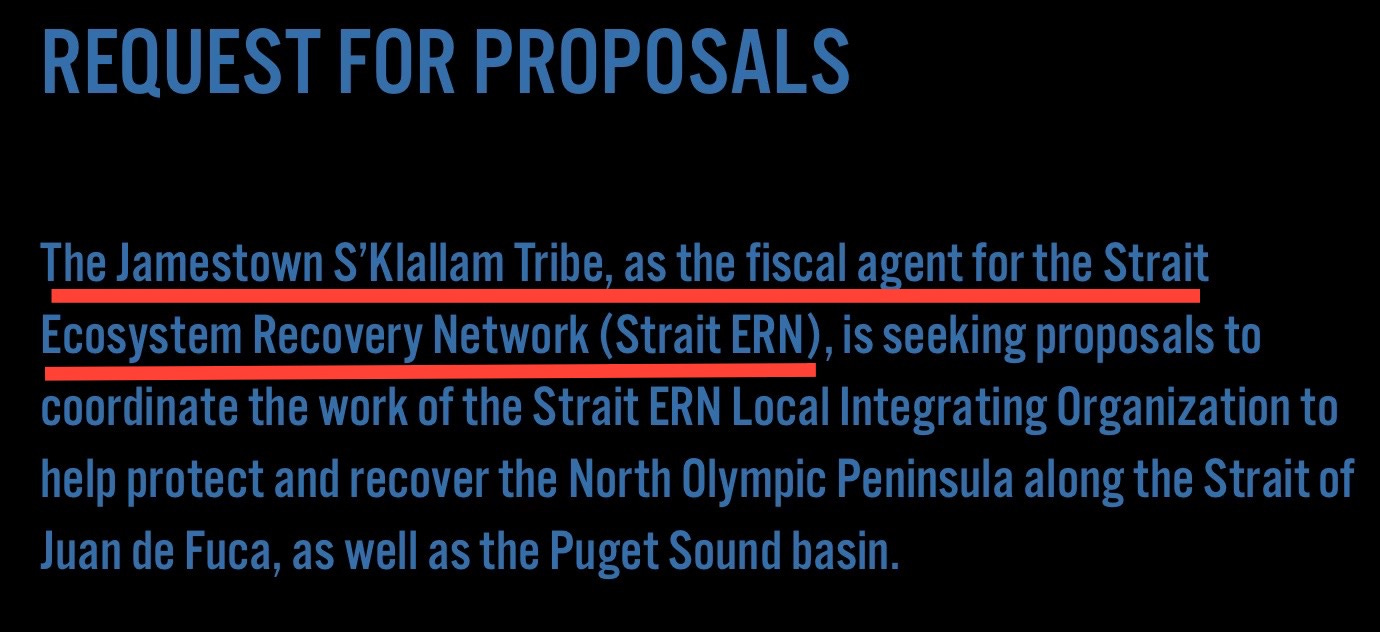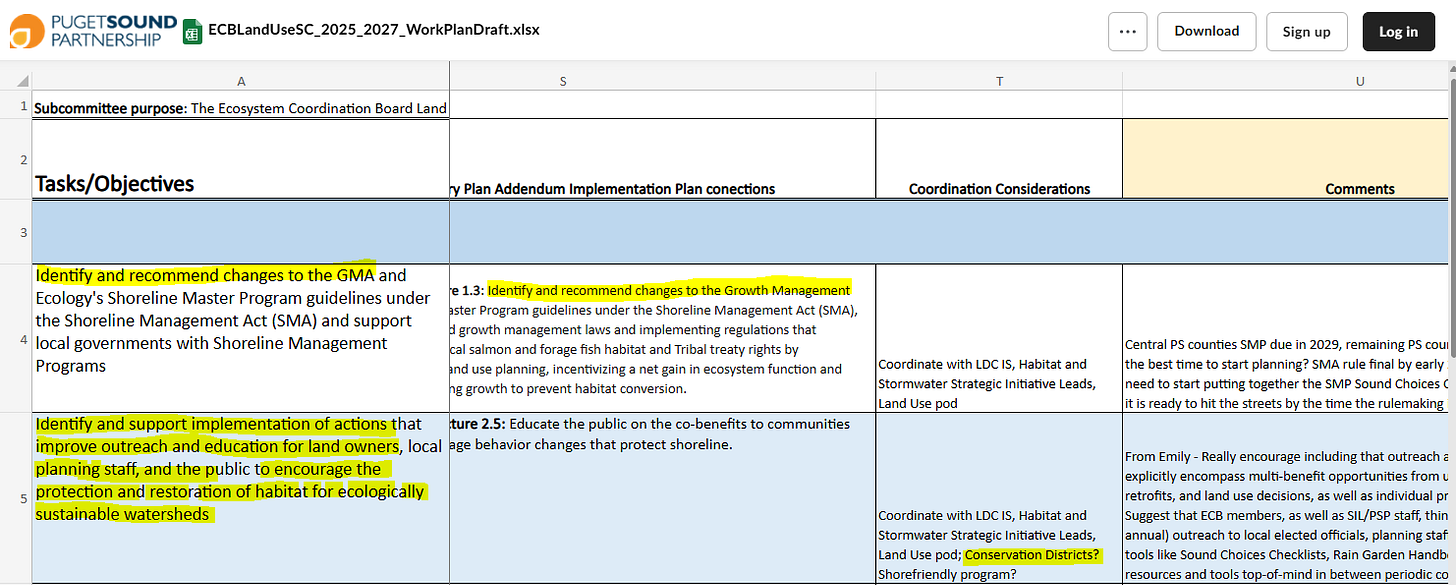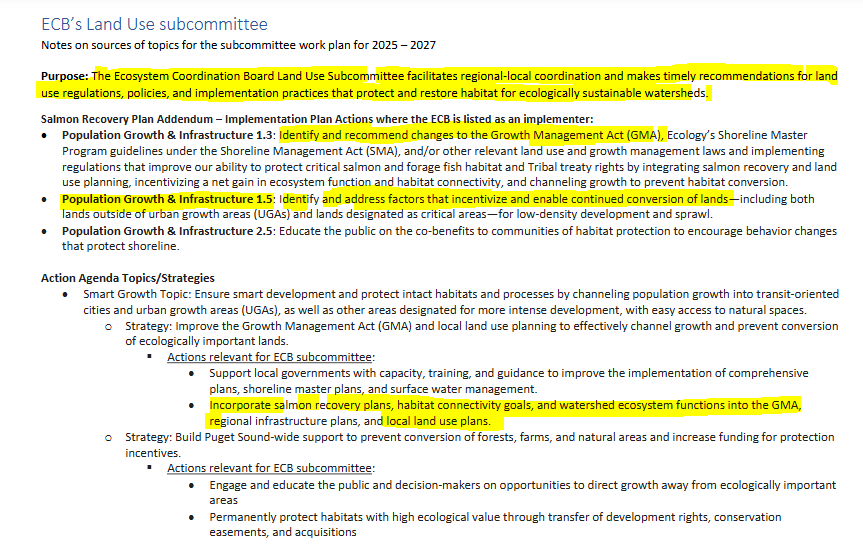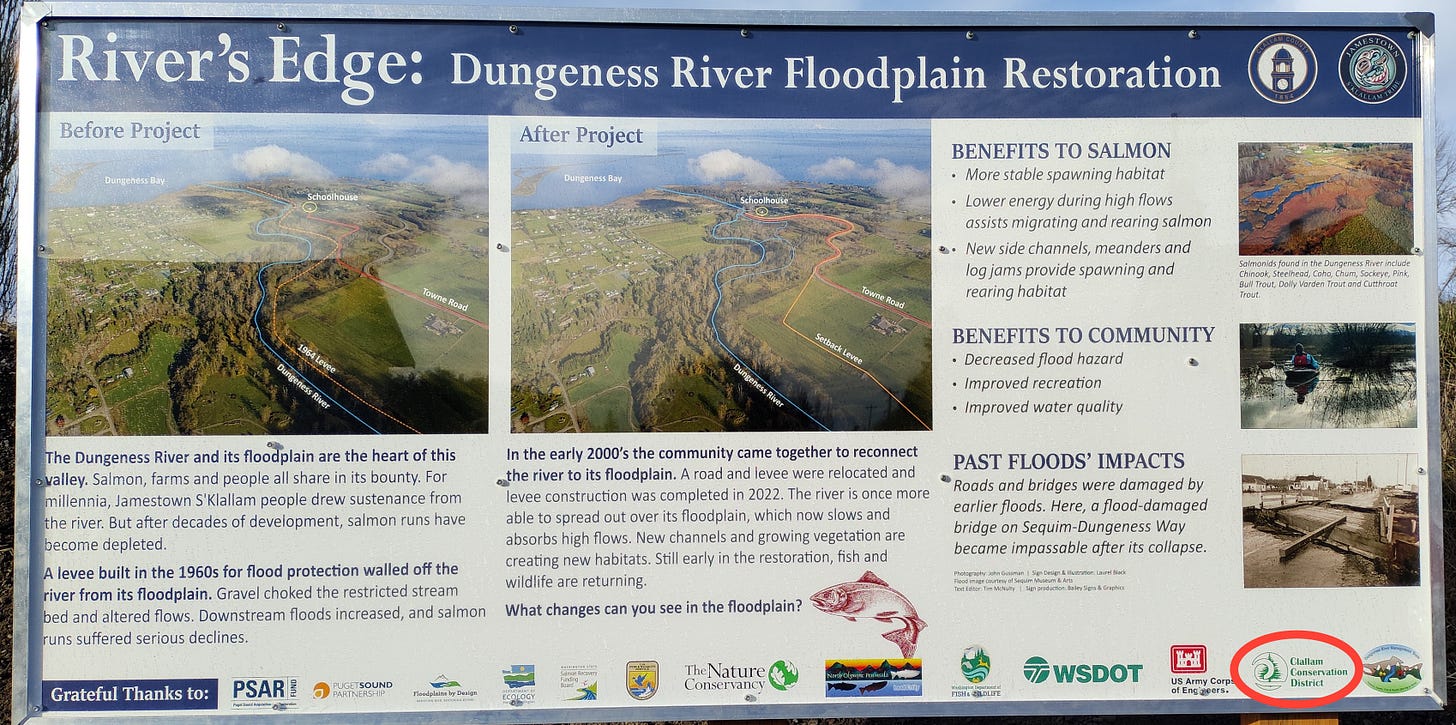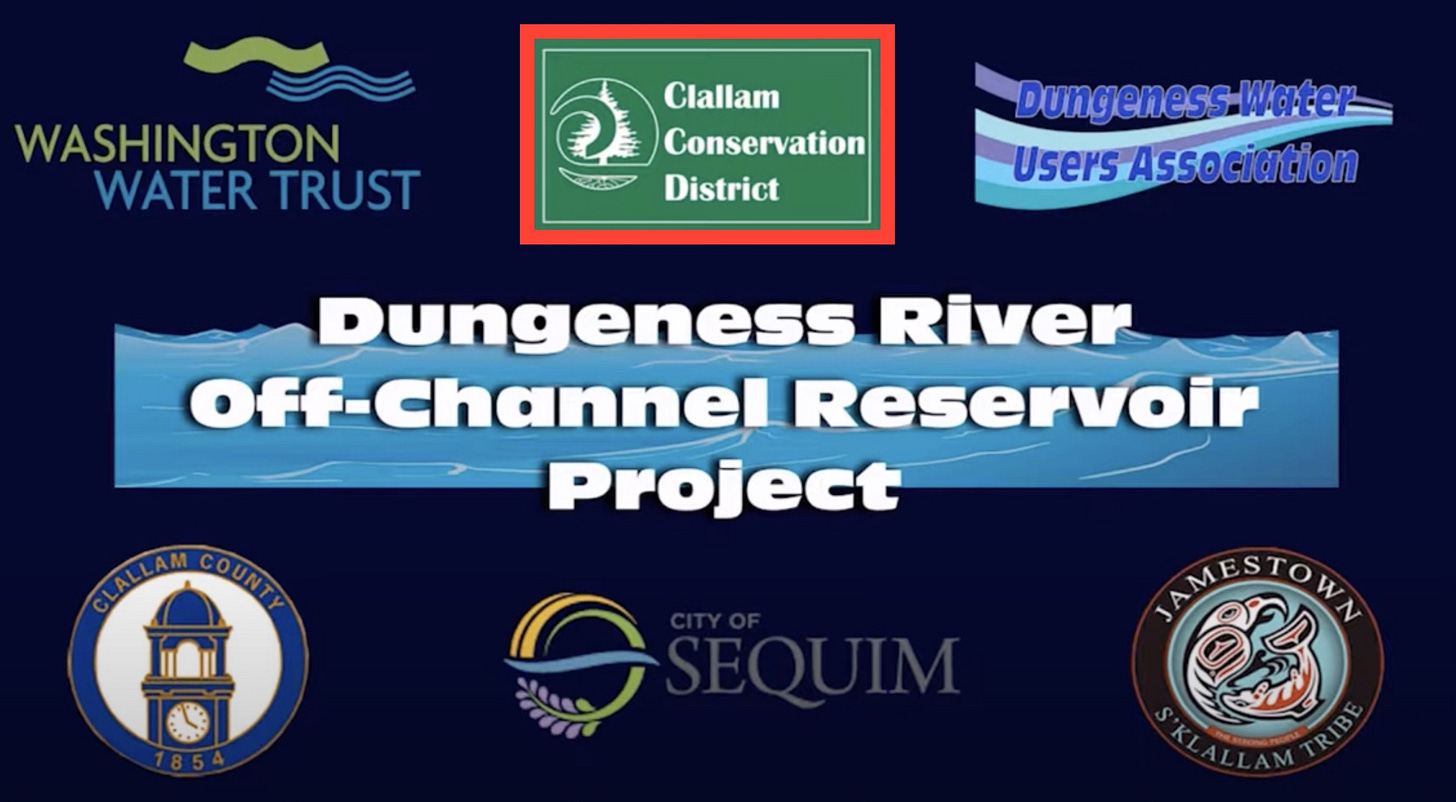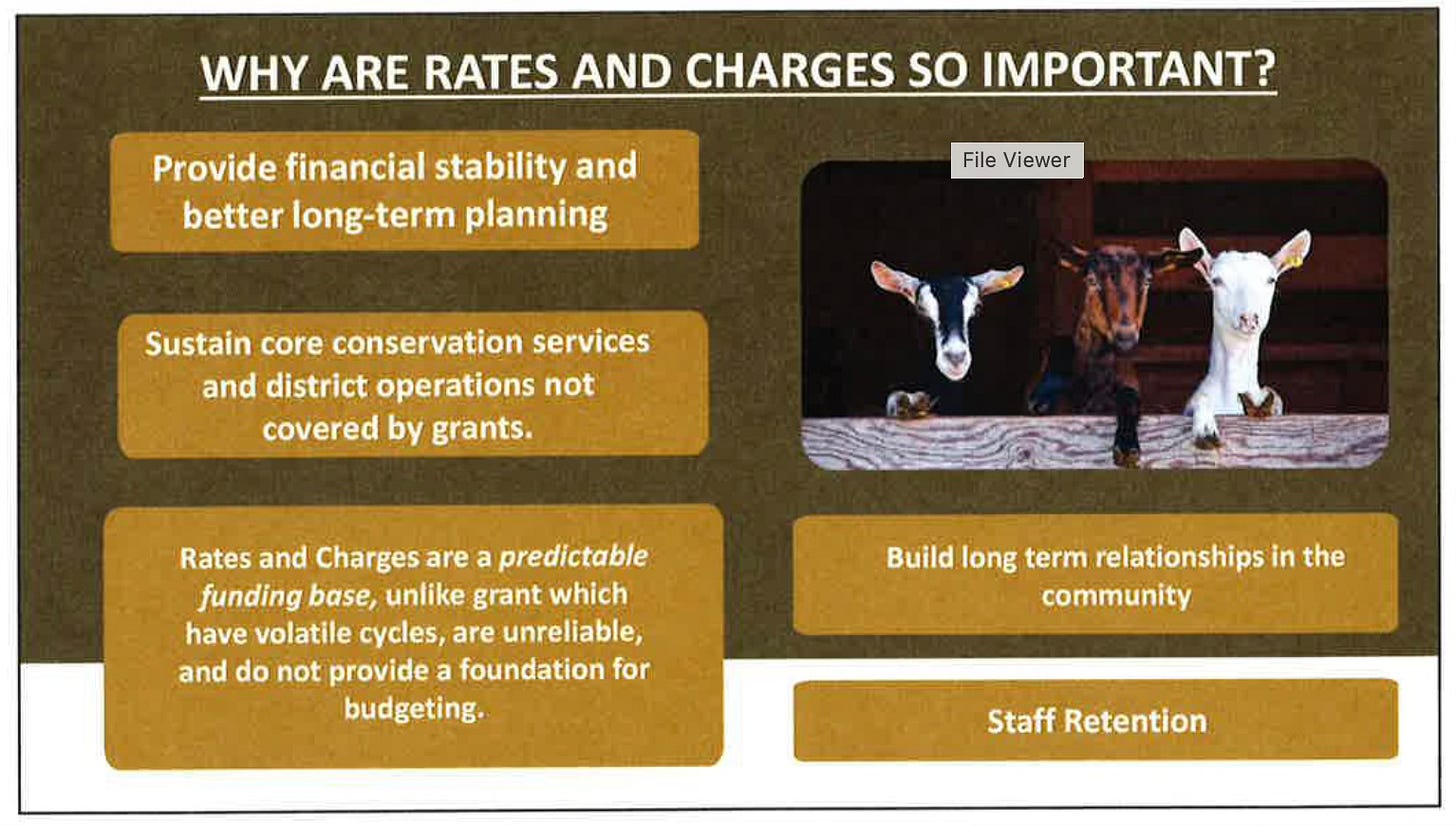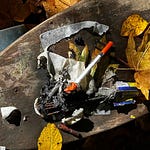County residents were told this week that a $5 parcel fee to fund the Clallam Conservation District (CCD) is nothing more than a modest investment in clean water and healthy land. But a closer look reveals something much bigger: Commissioner Mark Ozias is leaning on the Comprehensive Plan to justify the fee—while also presiding over the very NGO that shapes the plan behind closed doors. That’s not just a conflict of interest; it’s a policy pipeline where special interests dictate local land use, while the public is left in the dark.
Commissioner Ozias’ letter and polished defense
After Tuesday’s hearing on the proposed $5 parcel fee for the Clallam Conservation District (CCD), Commissioner Mark Ozias began circulating a form letter to residents (published in full at the bottom of this article). In it, he casts the CCD as indispensable, apologizing for the “length of the email” but insisting he owes the public a full explanation.
Commissioner Ozias’ argument boils down to this:
The Clallam County Comprehensive Plan explicitly endorses the CCD’s role, citing Goal 7’s directive to “support the work of the Clallam Conservation District.”
Without new funding, the CCD will be unable to carry out its vital mission—improving water quality, assisting farmers, protecting fish habitat, and maintaining soil health.
Note that our Comprehensive Plan says support the Conservation District, not fund it.
Commissioner Ozias’ defense of the CCD can be summed up like this: “We need them because they’re in our plans, and they’re in our plans because we need clean water and sustainable agriculture to survive.”
It’s circular logic — and it skirts the real issue. No one has demonstrated, or even tried to measure, whether the CCD’s activities — planting trees along streams, distributing pounds of cover crop, replacing septic systems, building manure sheds, or testing soil samples — actually produce the promised results of cleaner water and more secure food supplies.
Commissioner Ozias even concedes that Clallam residents are financially stretched, acknowledging that any new tax or fee is a burden. Yet he insists this “modest” $5 fee is the only path forward.
At first glance, his argument may sound reasonable. But scratch the surface, and a very different picture comes into focus.
The Comprehensive Plan: a self-made justification
Commissioner Ozias leans heavily on the Comprehensive Plan to defend the CCD fee. But here’s what he doesn’t say:
The North Olympic Development Council (NODC), a non-governmental organization (NGO), plays a major role in shaping that plan. And Commissioner Ozias just happens to be the President of the NODC.

That means when he cites the Comprehensive Plan as “proof” that the county must support the CCD, he’s pointing to a document he influenced through his own outside organization. It’s circular reasoning at best, and a conflict of interest at worst.
The NODC is not a neutral advisory body. It develops the Comprehensive Economic Development Strategy (CEDS), a blueprint for regional growth, infrastructure, and environmental policies. That strategy feeds directly into county-level planning. Policies and influence flow from the NODC’s framework into the county’s official documents.
So when Commissioner Ozias says “the Comprehensive Plan requires this fee,” what he means is: the Comprehensive Plan that his NGO helped craft now justifies the policies he wants as commissioner.
That is a closed loop, not an open process.
NODC, SERN, and the policy pipeline
It gets more complicated.
NODC also serves as the fiscal and administrative coordinator for Strait ERN (SERN).
SERN’s fiscal agent is the Jamestown S’Klallam Tribe—Commissioner Ozias’ top campaign donor.
According to its homepage, SERN is explicitly focused on “repairing relationships with the original people of these lands” due to colonization. Translation: a framework of reparations, funneled through land use, resource allocation, and county planning.
SERN, in turn, connects directly to the Puget Sound Partnership’s Ecosystem Coordination Board (ECB). SERN is an officially recognized Local Integrating Organizations (LIOs) under the umbrella of the Puget Sound Partnership (PSP). It seems complicated, but SERN works with the Puget Sound Partnership, helping carry out regional goals.
Note that Conservation Districts are tasked with coordinating the tasks/objectives of the Ecosystem Coordination Board.
The ECB advises on the state’s Action Agenda for Puget Sound recovery—and its scope is massive:
Recommending changes to the Growth Management Act (GMA)
Shaping Shoreline Master Programs (SMPs)
Integrating salmon recovery and habitat goals into local land use plans
And who sits on the ECB roster? None other than Karen Affeld, Executive Director of the NODC led by President Mark Ozias.
So let’s connect the dots:
NODC influences the county’s Comprehensive Plan.
NODC coordinates SERN.
SERN feeds into the Puget Soung Partnership’s Ecosystem Coordinating Board.
The ECB recommends changes to the very land use laws the county must follow (tribal properties are exempt).
Mark Ozias, as NODC President, uses those same Comprehensive Plan policies to justify new taxes and fees.
This is not a coincidence. It’s a pipeline.
From policy papers to flooded homes
These aren’t abstract connections—they have real impacts on people’s lives.
Three Crabs Restoration: The Clallam Conservation District recommended reengineering Meadowbrook Creek and redesignating Golden Sands Slough as protected habitat in a 2009 report. The result? Severe flooding in the Three Crabs neighborhood, starting immediately after the ribbon-cutting. Now, the County is floating “relocation” of entire neighborhoods and removal of 3 Crabs Road, leaving 600 residents stranded.
Lower Dungeness Floodplain Project: The CCD partnered in this project, which shut down Towne Road for two years and attempted to transfer the road to the Jamestown Tribe.
Dungeness Off-Channel Reservoir: Another CCD-backed project, aligned with NODC’s water strategies, supports ditch piping that dries up private wells—all in the name of conserving irrigation water, backed by Commissioner Ozias’ top campaign donor.
Each time, the pattern repeats: policies shaped outside public view, justified as “climate resiliency” or “habitat restoration,” and resulting in land loss, displacement of local residents, or taxpayers forking out millions for special, private, and political interests.
Clean air and water without parcel fees
Commissioner Mike French, an enthusiastic supporter of the fee, claims the CCD is essential to keeping water clean. But let’s break down that argument:
The premise is overstated. Environmental quality is shaped by multiple factors: land use, wastewater treatment, forest management, and existing state and federal regulations. The CCD is not the lone guardian of Clallam’s environment.
Other counties prove it. Jefferson, Okanogan, and Lincoln Counties maintain strong environmental standards without parcel fees, using grants, general fund dollars, or tiered service models instead.
The fee is a funding choice, not a necessity. To frame it as an environmental imperative is misleading.
Transparency is lacking. If the CCD’s work is truly vital, the public deserves a clear breakdown of how funds will be used and a discussion of alternatives. Instead, they’re being told to accept the fee as the only option.
The dog and pony show
What’s most concerning isn’t the $5 itself—it’s the way decisions are made.
Public hearings are held, but they’re little more than theater. The key decisions are made long before, at NODC or SERN meetings, or through PSP’s ECB. By the time county commissioners vote, the outcome is already baked in.
The public’s role is reduced to commenting on a process they weren’t truly included in—their only role is to fund predetemined decisions. The most important documents and strategies—the very ones shaping policy—are not made prominent or accessible to ordinary citizens.
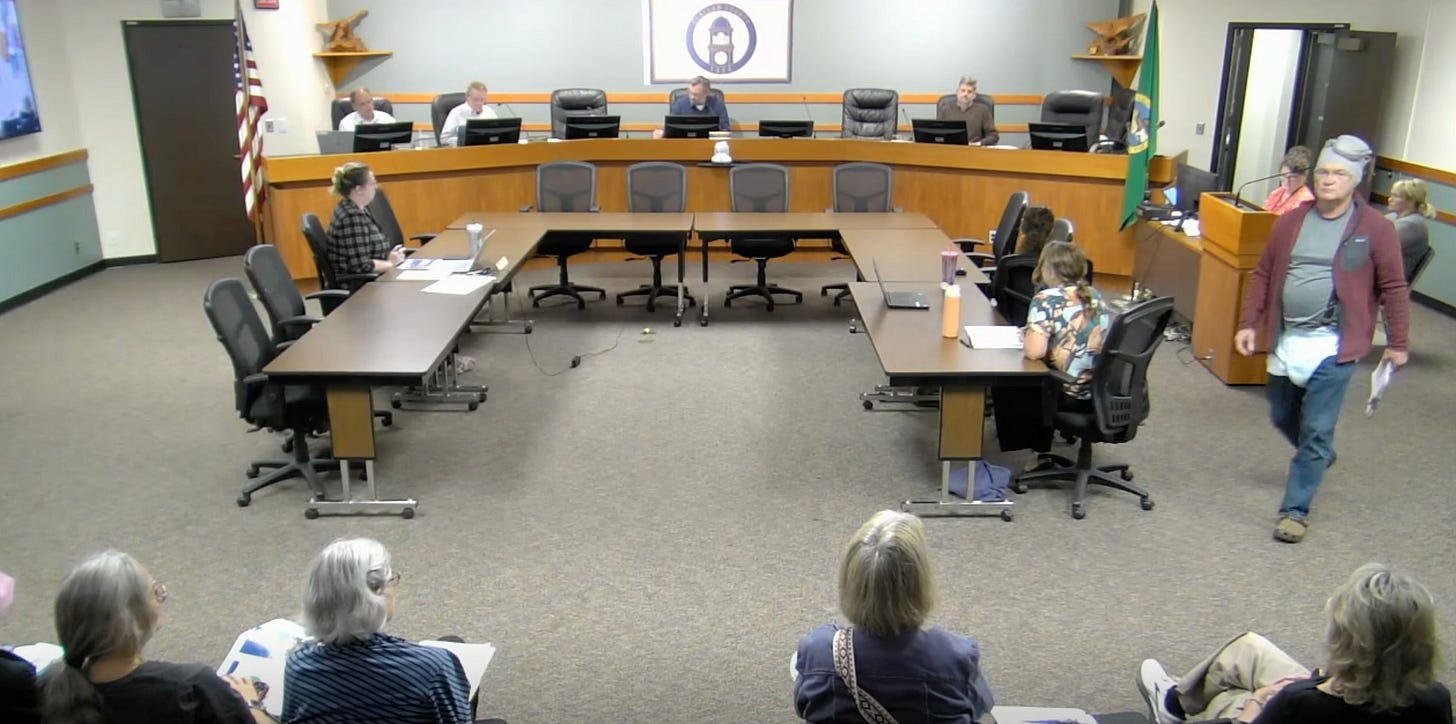
Clallam County is spending millions on a policy “process” that is really just a dog and pony show. The public sees the performance, but the real work happens offstage.
Much more than a $5 Fee
This is why the parcel fee matters. It’s not about $5. It’s about securing a dedicated funding stream for a political agenda advanced by NGOs, special interests, and commissioners with overlapping loyalties.
Commissioner Ozias wants residents to see it as a small price for clean water. But the record shows it’s part of a much larger project: reshaping land use, displacing communities, and consolidating power in the hands of a few connected organizations.
The residents who end up flooded out of their homes—or cut off from their property—are paying much more than $5.
A Trojan Horse for special interests
Commissioner Ozias presents the CCD fee as a practical solution. But in reality, it’s a Trojan Horse—an entry point for policies crafted outside the public eye, serving special interests rather than the community.
Clallam County residents deserve transparency. They deserve a real voice in how land use policies are written, not just a scripted role in a pre-decided play. And they deserve to know when a “modest fee” is really just the beginning of something much bigger.
The question isn’t whether $5 is affordable. The question is: what are we really buying, and who are we buying it for?
Last Sunday, Jake Seegers asked readers what most influences county commissioner decision-making. Out of 135 votes:
62% said, “Their own agendas / opinions”
21% said, “NGO affiliation”
16% said, “Political and social pressures”
1% said, “The will of the citizens”
Petition effort
Local resident Jake Seegers is leading a petition drive urging commissioners to reject the CCD’s proposed $5 parcel fee. You can help by downloading the petition, sharing it with friends and neighbors, and mailing completed copies to:
Jake Seegers
69 S. Point Rd
Port Angeles, WA 98363
Be sure petitions are postmarked by September 11. An in-person signing event is also planned for next Saturday in the Sequim area—stay tuned for details.
Commissioner Ozias’ form letter
Thank you for writing to share your position on a parcel fee to support the Clallam Conservation District. I understand why you do not support this concept. After careful consideration, I have come to a different conclusion and I want to try to share my reasoning. I apologize in advance for the length of this email, but I owe you a thorough explanation – especially if you do not agree with my position.
Conservation Districts are neither businesses or non-profit organizations. In Washington, conservation districts are subdivisions of state government that were authorized by the Washington State Legislature under the Soil and Water Conservation Act of 1939, which is codified as RCW 89.08. The act’s preamble starts by stating, “… the lands of the state of Washington are among the basic assets of the state and that the preservation of these lands is necessary to protect and promote the health, safety, and general welfare of its people…” The Clallam Conservation District was formed in 1959.
Our own Clallam County Comprehensive Plan (the guidance document that has been created and amended through public process for more than twenty years, and the document on which we rely to help us understand the desired conditions we are attempting to achieve) echoes the primary importance of land conservation; not only is there language throughout the document highlighting the vital nature of healthy natural habitats and preserved natural resources to our population, but agricultural resource lands are the very first to be addressed, even before forest lands.
Several of the agricultural resource goals outlined in our Comprehensive Plan make specific mention of the Clallam Conservation District; others speak to activities that the Conservation District supports such as water quality improvement, preservation of local food security and educating and supporting local farmers. For example, Goal 7 states “Clallam County shall support the work of the Clallam Conservation District to assist agricultural land users with maintenance and improvement of water quality, conservation of irrigation water, protection and enhancement of fish and wildlife habitat and biological diversity consistent with commercial agriculture, and prevention of erosion of valuable agricultural soils.”
On the ground here in Clallam County, this is exactly what the Conservation District accomplishes. They work to improve water quality by working directly with farmers to amend practices to reduce or eliminate the potential for fecal contamination of nearby rivers and streams. They work to improve water quality by partnering with the Environmental Health team to provide technical and financial assistance to local homeowners with failing septic systems. They work to improve habitat through the promotion of native plants and through riparian planting projects to support local landowners. They work to help improve water availability and support fish habitat through partnerships with local irrigation districts. They work with farmers to improve soil health and tilth.
They are a vital partner to numerous landowners in our county, as well as to local and state government and the benefits they work to achieve – like improved water quality – impact all of us. For example, a failing septic system creates an immediate environmental health concern for any nearby resident, but it also leaches contaminants down through the water table. When enough of these contaminants accumulate we see things like large marine areas being closed to shellfish harvesting. This is just one example, but representative of most all of the work that the Conservation District accomplishes.
Even though Conservation Districts are a subdivision of state government, the Legislature has not identified a dedicated source to fund this work. The Clallam Conservation District is funded largely through a variety of grants, allocated through various state and sometimes federal agencies. These grants are typically competitive and are geared to supporting a certain activity; there are no grants available to cover non-programmatic expenses such as maintaining a website, responding to public records requests or managing District elections.
Due to the vital nature of the Clallam Conservation District, and in recognition of the constraints imposed by having no unrestricted resource to carry out basic required functions like the above, the County Commissioners have historically made an annual allocation of General Fund dollars to support this work.
Now, due to the significant budget constraints we and all counties are experiencing, we are no longer in the position of being able to allocate funds to support the Conservation District. Yet their work is more important than ever.
As we have looked outward to other counties and other Conservation Districts, we have learned that the most effective Districts operate with dedicated support from their community, either through a special assessment or through a per parcel and/or per acre fee.
The elected leaders of the Clallam Conservation District have done a thorough analysis of these options and are recommending a $5 per parcel fee, which is what we are currently considering. In conversation after Tuesday’s public hearing on this matter the Board favored moving forward with this $5 fee, but with some boundaries:
Setting a ten year “sunset” of this fee so that a future Board of County Commissioners has the opportunity to review the effectiveness and impact of the parcel fee before determining whether to keep it, drop it or amend it.
Adding language to clarify that the fee will remain at $5 for the entirety of the ten year period, with no CPI or other cost escalator.
Requiring an annual report to the Commissioners and the public.
One of my foundational beliefs as an elected official is that once we have gone through a public process that establishes priorities and objectives – in other words, once we as a community have described what we wish to see – it is my job to work with my colleagues and the community to see that we are successful in addressing those priorities and meeting those objectives.
In this case, if we are to be successful in addressing some of our most important priorities and objectives, we need the existence and expertise of the Clallam Conservation District. Since the state has provided us with no dedicated funding but a variety of expected outcomes; we are moving forward with a strategy that will ensure this organization has the ability to meet both the needs of county residents and local governments alike.
I recognize that many in our community struggle to meet their financial needs and that any additional tax or fee is a burden. If we were able to continue to allocate general fund dollars, I would not favor this fee. If it wasn’t important to support the agricultural sector in our community, or if we lived in a county with few habitat concerns, I would not favor this fee. If our Comprehensive Plan did not speak both specifically to the importance of the Clallam Conservation District and to the work it supports and facilitates, I would not favor this fee. If I did not believe that this work results in broad community benefit and long-term cost savings, I would not favor this fee.
However, this is not the reality we face and therefore I support the recommendation of the elected leaders of the Clallam Conservation District to move forward with this modest fee, with the guardrails described above.
Sincerely,
Mark Ozias




